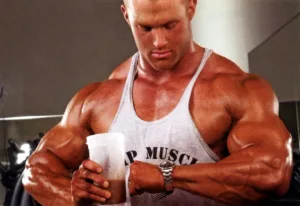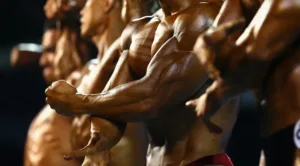Cutting diets and bulking diets are two different dietary strategies that are often used by bodybuilders and fitness enthusiasts to achieve their physique goals.
Cutting diets are designed to help people lose body fat while preserving muscle mass. This is typically done by creating a calorie deficit, which means that the person consumes fewer calories than they burn each day. Cutting diets often emphasize lean protein sources, complex carbohydrates, and healthy fats.
Bulking diets are designed to help people gain muscle mass. This is typically done by creating a calorie surplus, which means that the person consumes more calories than they burn each day. Bulking diets often emphasize protein-rich foods, complex carbohydrates, and healthy fats.
Setting out on a fitness journey (or setting a new goal, for you veterans) can be both exciting and overwhelming – especially when it comes to figuring out which sports nutrition plans will help you get more out of your training routine. “Two popular approaches to achieving specific goals are a cutting diet and a bulking diet”. Here, we’ll explore the main differences between these two diets, their key concepts, the best meal plans for each, who would benefit from each approach, debunk some common myths, and provide action plan steps to help you get started.
Cutting Diets
A Cutting Diet is primarily focused on reducing body fat while preserving lean muscle mass. It is commonly used by individuals who want to shed excess weight and achieve a leaner physique.
Here are 5 main points and concepts to understand about Cutting Diets:
- Caloric Deficit: The primary goal of a cutting diet is to consume fewer calories than you burn. This creates a caloric deficit, prompting the body to use stored fat for energy.
- Macronutrient Balance: Nutrition for cutting focuses on an intake of proteins, carbohydrates, and healthy fats. Proteins help maintain muscle mass, while carbohydrates and fats provide energy.
- Portion Control: Practice mindful eating and manage portion sizes to control calorie intake.
- High-Quality Foods: Choose nutrient-dense foods such as lean meats, fruits, vegetables, whole grains, and legumes to ensure proper nourishment.
- Regular Exercise: Combine your cutting diet with regular workouts, including cardiovascular exercises and strength training, to enhance fat burning and preserve muscle.
 Here is a table that summarizes the key differences between cutting diets and bulking diets:
Here is a table that summarizes the key differences between cutting diets and bulking diets:
| Characteristic | Cutting diet | Bulking diet |
|---|---|---|
| Goal | Lose body fat while preserving muscle mass | Gain muscle mass |
| Calorie intake | Less than calories burned | More than calories burned |
| Macronutrient focus | Lean protein, complex carbohydrates, healthy fats | Protein-rich foods, complex carbohydrates, healthy fats |
Check Out Our List Of The Best Supplements For Building Muscle, Shredding Muscle, Recovery, And Great Health, and Wellness Products! Purchase IFBNewsfeed.Org‘s Apparels Here: IFBNewsfeed.Org
Which diet is right for you?
The best diet for you depends on your individual goals and needs. If you are looking to lose body fat, a cutting diet may be a good option for you. If you are looking to gain muscle mass, a bulking diet may be a good option for you.
It is important to note that both cutting and bulking diets should be done in a healthy and sustainable way. It is recommended that you speak with a registered dietitian or other qualified healthcare professional before starting any new diet, especially if you have any underlying health conditions.
Here are some tips for following a cutting or bulking diet:
- Eat plenty of lean protein sources, such as chicken, fish, beans, and tofu. Protein is essential for muscle growth and repair.
- Choose complex carbohydrates over simple carbohydrates. Complex carbohydrates, such as whole grains, fruits, and vegetables, provide sustained energy and help you feel full longer.
- Include healthy fats in your diet, such as nuts, seeds, and avocados. Healthy fats are important for overall health and can help you feel more satisfied after meals.
- Strength train regularly. Strength training helps to build and maintain muscle mass.
- Be patient. It takes time to see results from a cutting or bulking diet. Don’t get discouraged if you don’t see changes immediately.
Who should use a Cutting Diet and when? Cutting Diets are great for those looking to reduce body fat and achieve a more defined physique. They can be particularly beneficial when preparing for a competition, vacation, big event, or before transitioning to a bulking phase.
 Common myths and misbeliefs about Cutting Diets:
Common myths and misbeliefs about Cutting Diets:
- Myth 1: Cutting out all fats is necessary for weight loss. In reality, healthy fats are essential for various bodily functions and should be included in moderation.
- Myth 2: Skipping meals will speed up fat loss. However, this can lead to muscle loss and a slower metabolism, hindering your progress.
Action Plan Steps for Getting Started with a Cutting Diet:
- Food first! Calculate your daily calorie needs and aim for a moderate caloric deficit (+/- 300- 500 calories).
- Choose nutrient-dense foods and focus on portion control.
- Incorporate regular exercise that you enjoy and will be consistent with – combining cardiovascular and strength training activities.
Bulking Diets
A Bulking Diet is designed to promote weight gain, muscle growth, and strength. It involves consuming a surplus of calories to provide the body with the necessary fuel for adding weight and muscle development, when combined with regular resistance training.
 Here’s 5 main points you need to know about Bulking Diets:
Here’s 5 main points you need to know about Bulking Diets:
- Calorie Surplus: Consuming more calories than your body burns creates a surplus, which aids in bulking and adding size.
- Lifting Weights and Progressive Overload: Focus on resistance training that you enjoy and will be consistent with and gradually increase the weights to stimulate muscle growth.
- Protein Intake: Ensure an adequate protein intake to help support muscle recovery and growth.
- Complex Carbohydrates: Include foods like whole grains, sweet potatoes, and oats to fuel intense workouts.
- Healthy Fats: Incorporate sources of healthy fats such as avocados, nuts, and olive oil for overall health and hormone regulation.
Who should use a Bulking Diet and when? Bulking Diets are great for individuals aiming to gain weight, build muscle mass, and improve strength. It’s commonly used during the offseason for sports or when a person wants to focus on increasing muscle size.
Common myths and misbeliefs about Bulking Diets:
- Myth 1: Bulking means eating everything in sight. While a calorie surplus is necessary, it should consist of nutritious foods rather than overindulging in unhealthy choices.
- Myth 2: Bulking will make you gain excessive fat. By following a structured plan and monitoring your progress, you can minimize unwanted fat gain while maximizing muscle growth.
Action Plan Steps for Getting Started with a Bulking Diet:
- Food first! Determine your daily calorie requirements and aim for a moderate caloric surplus (+/- 20%).
- Follow a progressive weightlifting program to stimulate muscle growth.
- Prioritize protein intake to help support muscle growth and recovery.
- Include complex carbohydrates and healthy fats for sustained energy and overall health.
- If you can’t consume enough calories from your whole food nutrition, consider increasing your daily calories by adding a weight gain supplement like Optimum Nutrition Serious Mass to your daily routine.
- As Serious Mass contains 1,250 calories per serving (along with 50 grams of protein from whey protein, 250 grams of carbohydrates, and 3 grams of creatine monohydrate), you may want to start with half a serving to assess your tolerance and progress to a full serving over a few days.
Scooping it All Together
Understanding the differences between a cutting diet and a bulking diet is crucial in making sure your sports nutrition plans are aligned with your specific fitness goals. Whether you’re looking to shed body fat or gain muscle mass, remember to prioritize a balanced diet, regular resistance training, and gradual progress. By following the provided action plan bullets, you can embark on your fitness journey with confidence and set yourself up for success.
Another extremely important point: consult with a licensed and qualified healthcare professional or a registered dietitian before making any significant dietary changes.
More About Cutting Diets vs. Bulking Diets Contents
- “Weight Training”: A Comprehensive Guide For Beginners. The Types And The Routines Of “Weight Training Exercises”
- Bulking Phase / Off-Season Phase: How To Gain Muscle — “A Complete Guide To Eating For Mass Explosion”
- Cutting-Edge: Importance Of Calories When Dieting. How Many “Calories” Should You Be Eating Daily?

For More News And Daily Updates, Follow IFBNewsfeed.Org on Facebook, Twitter, and Instagram. Comment, Like, And Share With Everyone Who May Need To Be Updated With The Most Recent Fitness/Bodybuilding/Powerlifting And CrossFit News.






